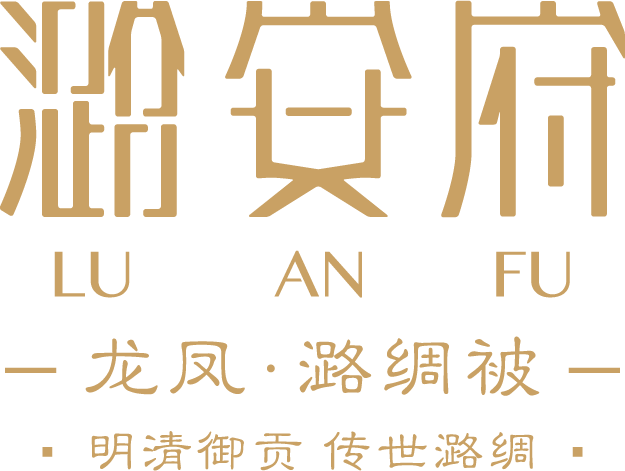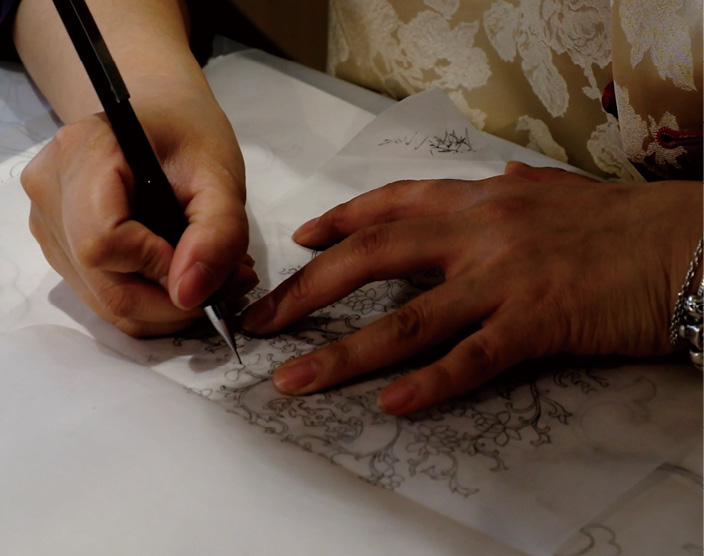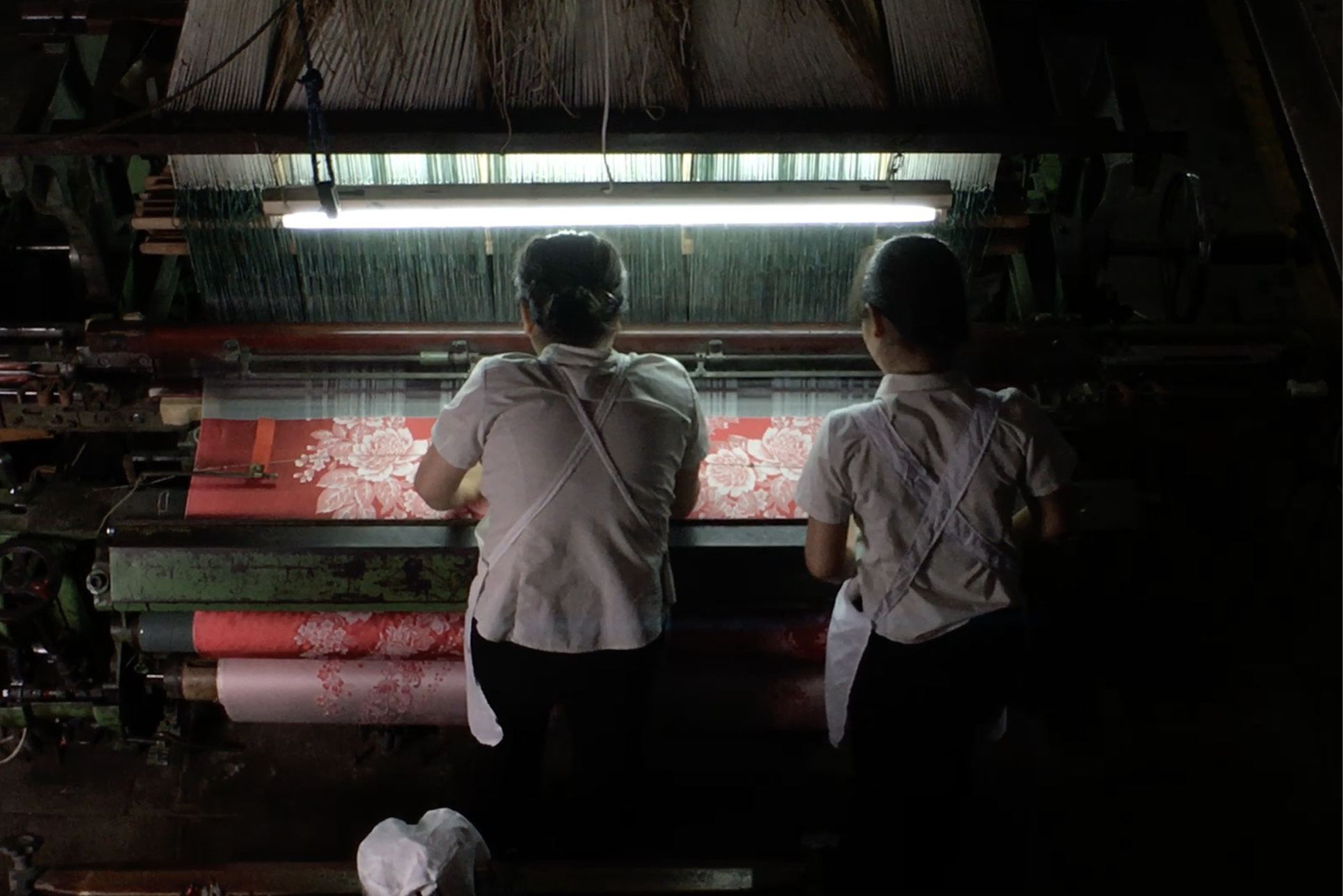HANDMADE SKILLS
The designers of Lu silk mainly drew design elements and inspiration from the Song and Ming dynasties and the Palace Museum. The conception and hand drawn sketches are the beginning of Lu silk products, often requiring about a year of repeated drawing and modification. After confirmation, draw the pattern completely and hand it over to the organization craftsman for creative organization design.
-

On the cover of the 2024 Fudan University admission notice, the dragon, phoenix and cloud patterns of the Danbi Stone in the Forbidden City were decoded and reborn by the artisans of Lu silk. First, they hand-painted the stone-carved patterns into artistic designs, and then used steel needles to Pierce holes one by one on kraft paper to form readable jacquard patterned plates. This process is like transforming the hardness of rocks into the flexibility of silk - when the patterned plates are installed on the loom, the silk from the Taihang Mountains awakens in the interweaving of warp and weft, weaving a three-dimensional cloud pattern with concave and convex, and the historical warmth within reach flows on the surface of the silk...
-
Precision decoding: For a 30cm×40cm pattern, over 5,000 control points need to be located, with an error of no more than 0.1 millimeters for each point. Dynamic balance: It adopts a structure of "three twill stripes + six jacquard weft stripes", which not only ensures the three-dimensional effect of the pattern but also maintains the drape of the fabric. The interaction between man and nature: When a craftsman is drilling holes, he needs to calculate the tension of the silk thread simultaneously, just like a musician adjusting the strings of a musical instrument, making the mechanical rhythm in harmony with the breathing of the silk.

-
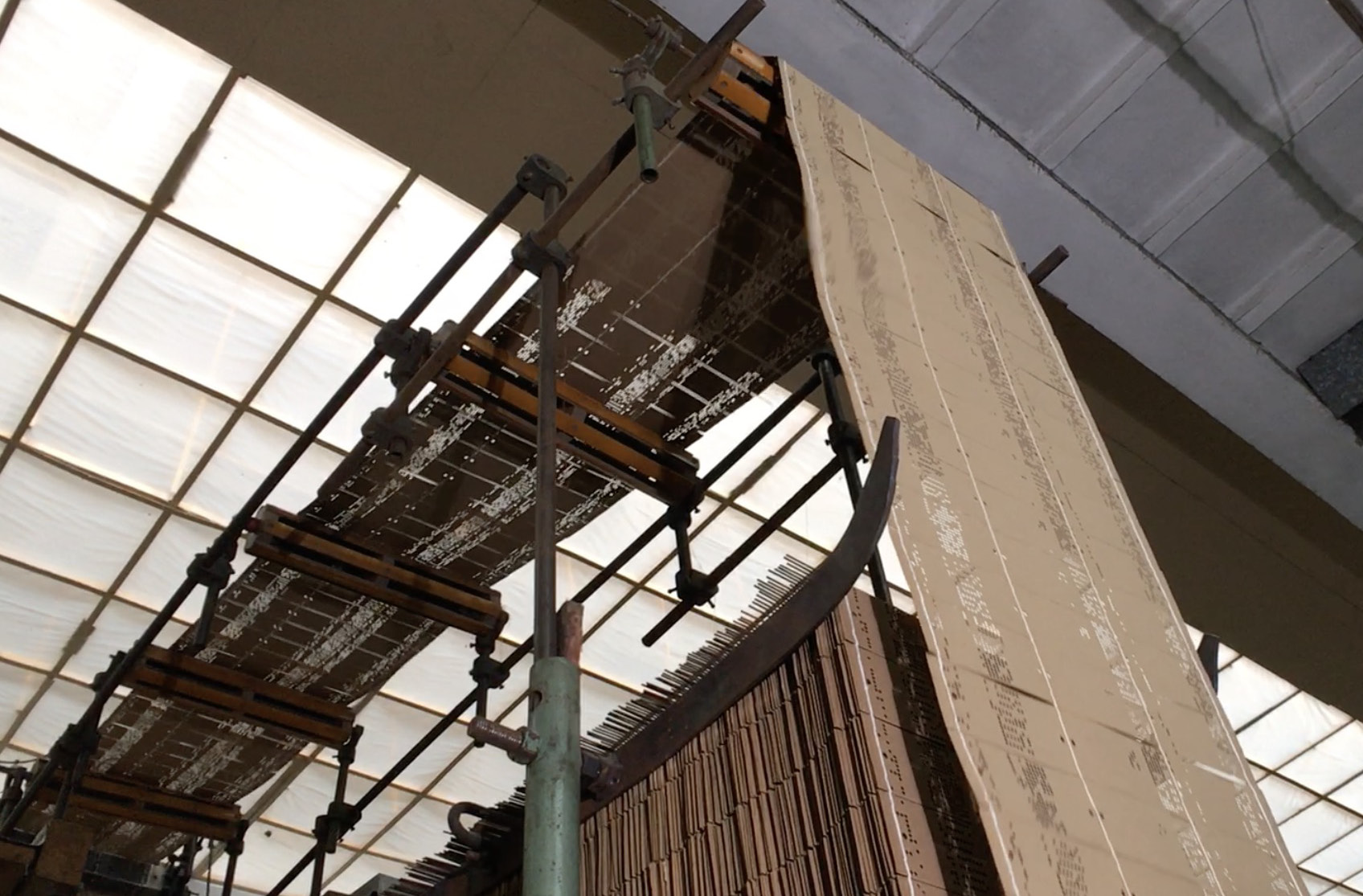
The first clear sound of the wooden shuttle hitting the jacquard loom, 15,982 mulberry bark patterned plates, like unfurled bronze chime bells, are lined up in the interwoven secret code of longitude and latitude - this string of characters that correspond to the mathematical principles of all things in the "I Ching" was originally the frozen time code of the weaving bureau of the Ming and Qing dynasties. With the swift movement of the needle and thread, the silk ribbons undle to form a painting: the peonies gradually bloom as the moon rises and sets on the second day of 15982, and the cloud patterns continue to flow with each inhalation and exhalation of 15982. The craftsmanship of the "Kao Gong Ji" engraved in the texture of the tribute silk echoes with the light shuttle of the 21st century, forcing the algorithm of the mechanical arm to submit to the ancient Silk Road equation. These 16,000 precise strikes spanning six hundred years are just like the scattered layout of "Tiangong Kaiwu", leaving an indelibable mark of the craftsmanship spirit on every inch of Lu silk.
-
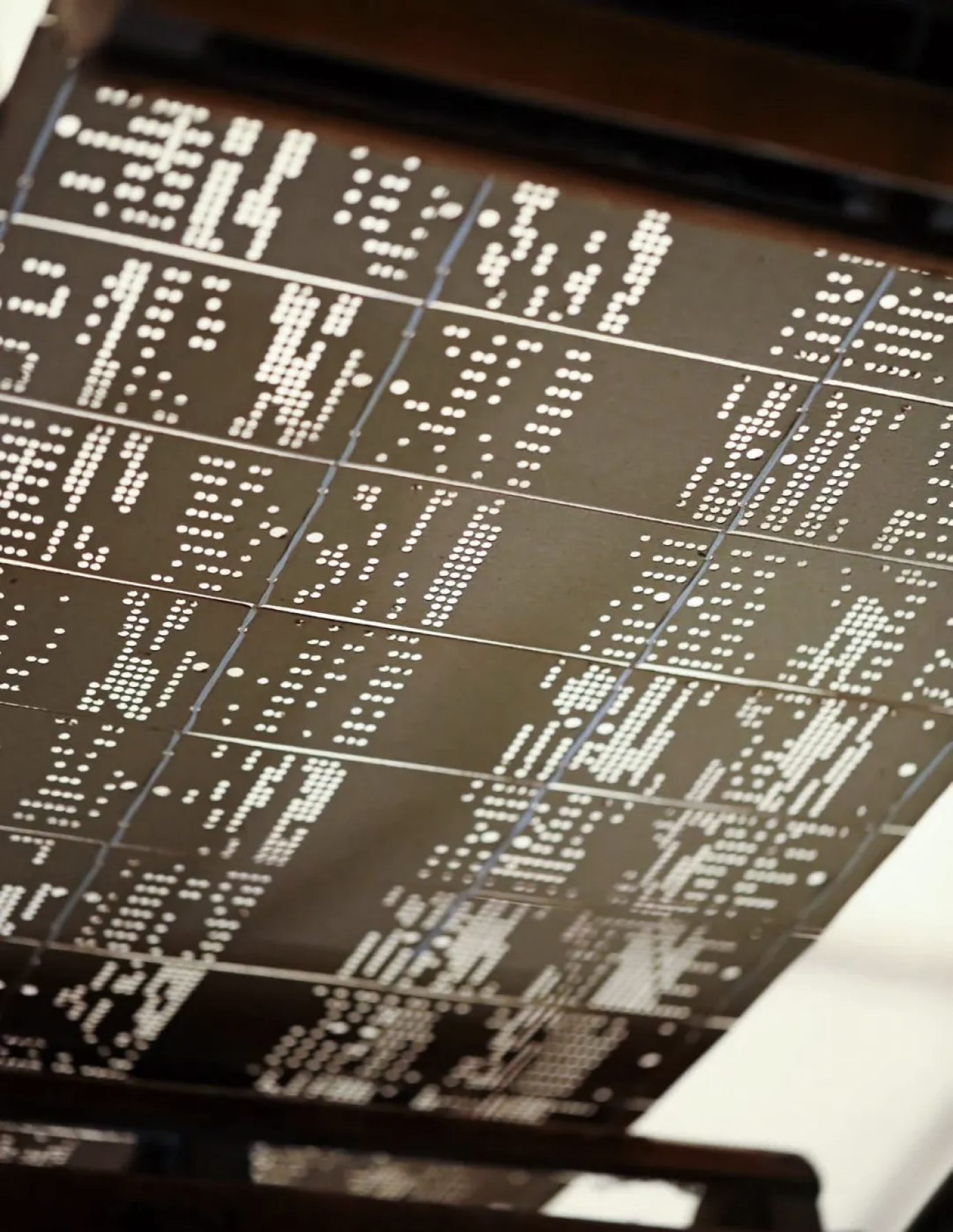
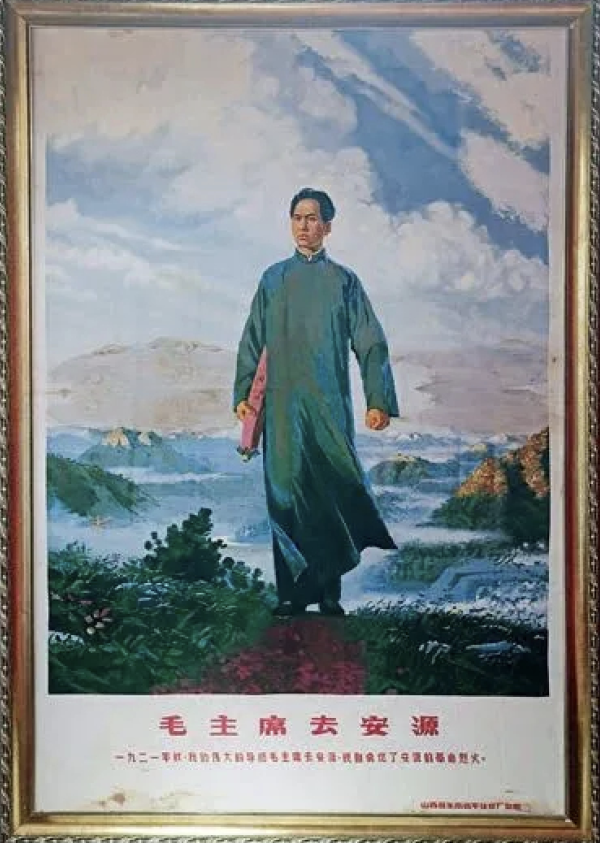
These mulberry bark paper plates are like oracle bone inscriptions printed on bronze wares, as well as the frozen living springs of time in movable type printing, building a suspension bridge of civilization between mechanical gears and silk intestines.
-
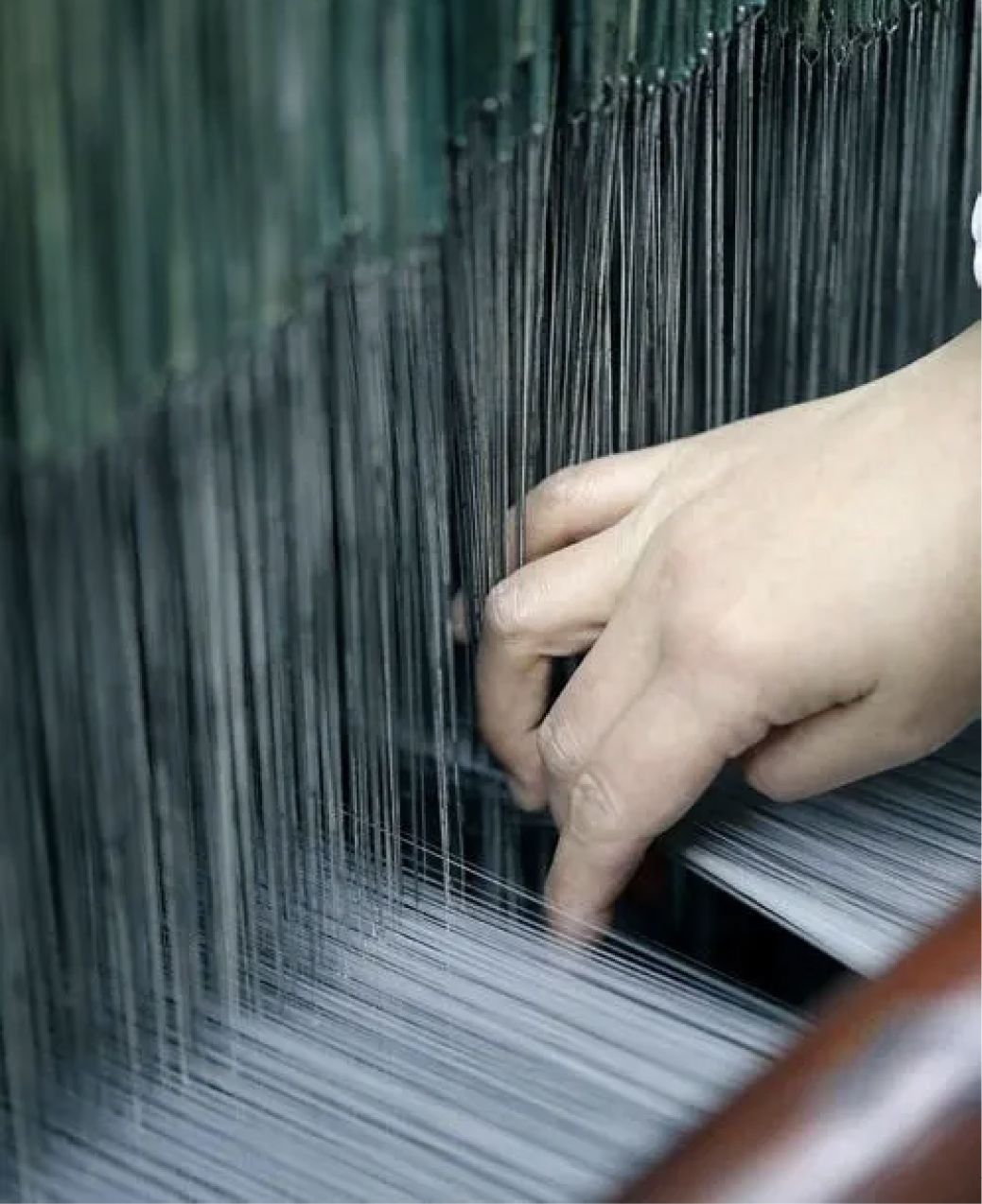
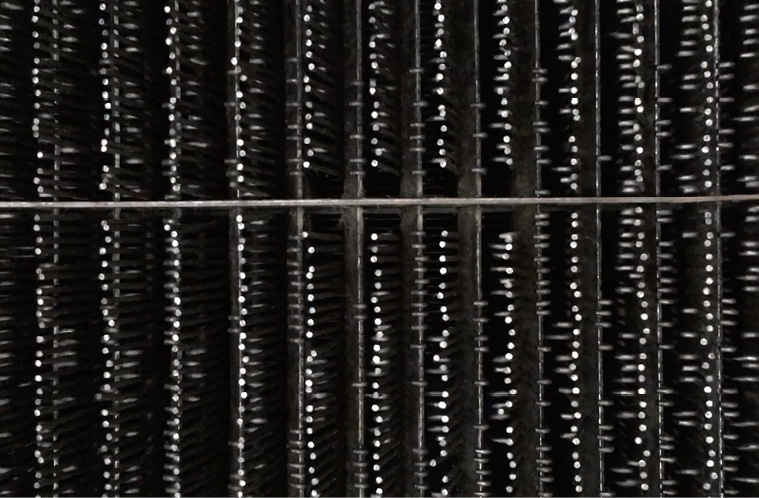
Mulberry silk passes through the holes in the pattern and surges into waves on the warp under the pull of the steel needle. The cast-iron dragon-head looms of the 1960s are closely related to the wooden ones of their ancestors, and the bronze keels vibrate with the lingering sounds of the Gong, Shang, Jiao and Yu. The female textile workers have taken off their coarse cloth aprons, but the fingertips of the silk ribbons are soaked with the bloodline of the silkworm spirit. When they raise their hands to thread the weft on the cast-iron machine, it is clearly Leizu unrolling her wide sleeves among the patterns of the Shang and Zhou bronze wares.
-
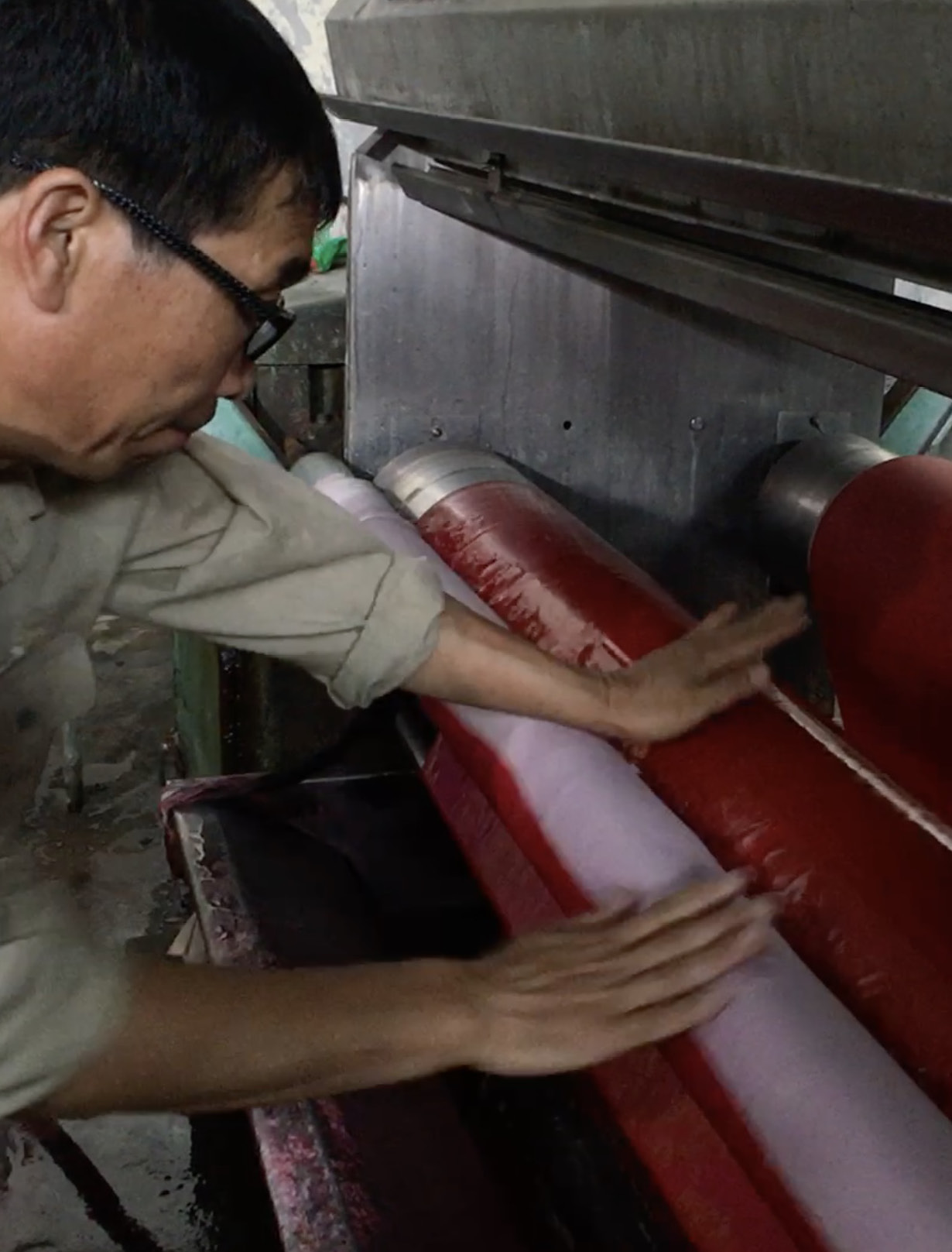
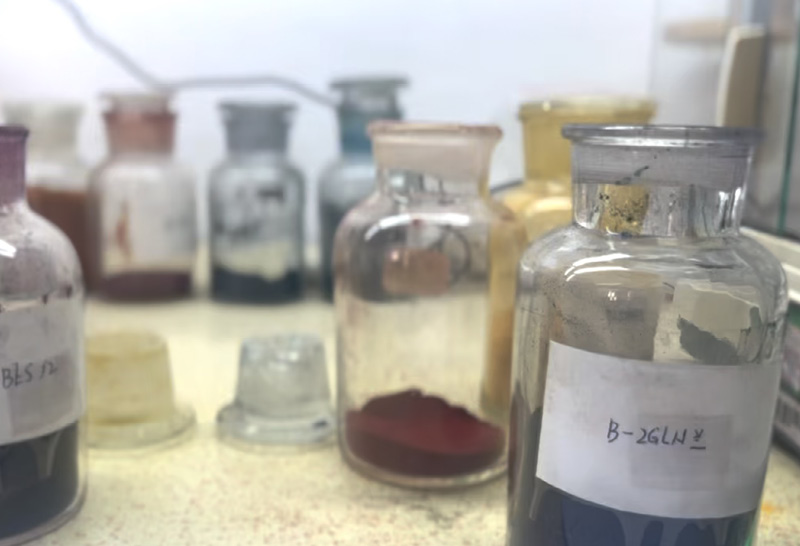
The wrinkles of the old dye master hide the secret recipe of plant dyes, and the ripples of the spectrum dance in front of the screen of the young engineer. When digital color control replicated the green and blue of Emperor Huizong's scroll of the Song Dynasty, a thousand years of time and space suddenly collapsed into a piece of silk - it was not only the revival of colors, but also the high-fiving celebration of countless hands crossing history. In the dyeing VAT of Lu Silk, two kinds of flames are always surging: one is the humility towards mountains, rivers, grass and trees, and the other is the yearning for the beauty of the world. Every immersion is the artisan touching his heart with his hand, stubbornly leaving evidence of tenderness in an era of mechanical roar.
-
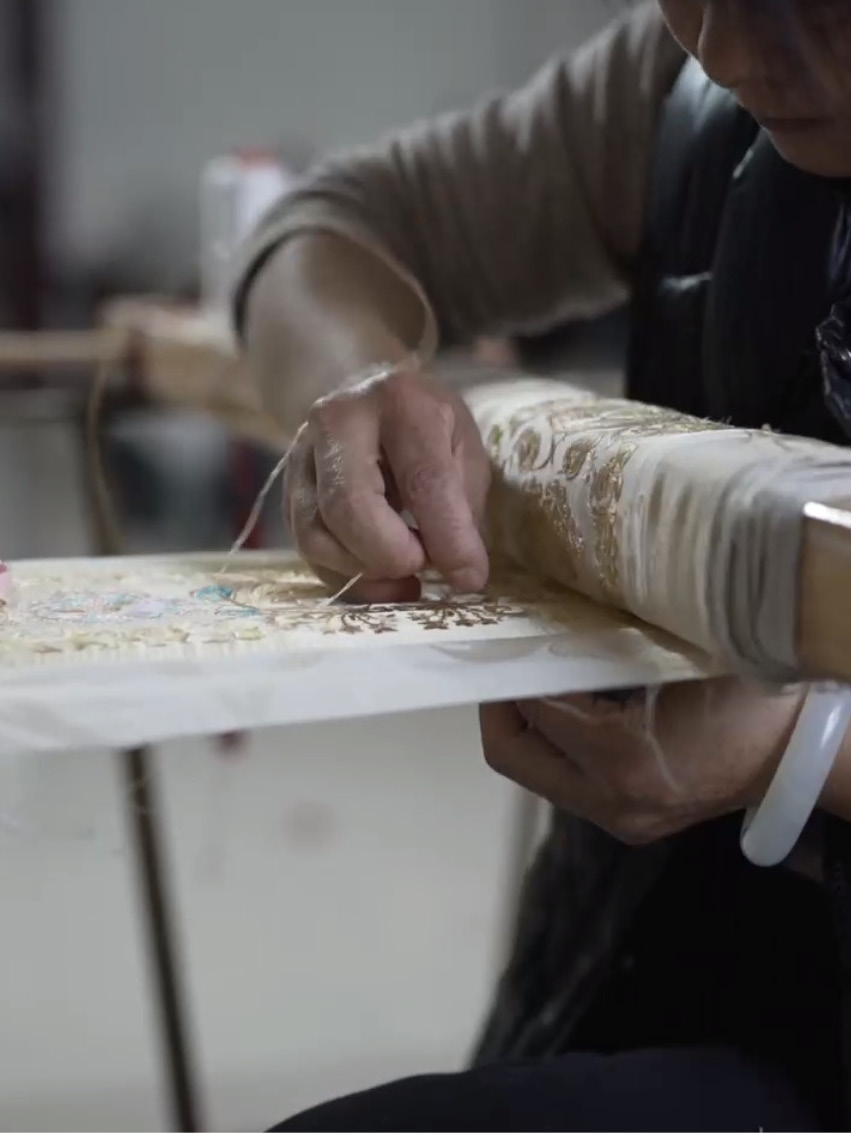
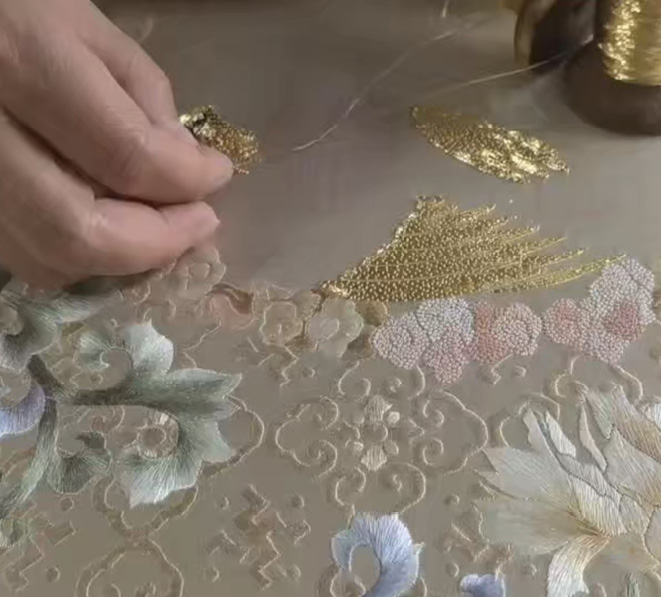
The continuous patterns on the patina solid wood frame always come to light at dusk: when the setting sun slants into the embroidery workshop by the Dan River, the unfinished cloud patterns suddenly flow on the silk surface. The light spots that seep through the needle holes overlap with the shadows of the copper shears, as if the palace lanterns from the workshop a hundred years ago are shining on the silver needles of today to continue writing the past's verses.
-

The relief carving effect of Lu silk is born from the triple folding of time and space: During the Ming Dynasty, artisans carved the patterns of the cliff cypresses in the Taihang Mountains into wood grain plates. In the 1950s, technicians translated them into perforated steel molds. On a frost-like night in 1968, Wang Xiulan, a 19-year-old handloom worker, suddenly slowed down the rhythm of the handloom. This unrecorded 0.3-second delay caused the originally flat weft lines to stack up a 0.07-millimeter bulge on the bronze chime bell pattern. It is precisely these breathing errors that enable the mechanically woven star catalogue to develop the texture of human hand warmth.
-
When modern dyeers bend over to the laboratory, test tubes in their hands replace earthenware jars, yet they still hold the reverence of their ancestors. They used molecules to dissect the glow of ancient paintings, transforming the water color of the Bian River, the brick gray of the Rainbow Bridge, and the ochre red of the wine flag in the "Along the River During the Qingming Festival" into precise color value codes. Tianqing and Zhu Zhan no longer relied on the celestial timing, but still carried the souls of the Taihang Mountain rocks. In the water flow of the same bath dyeing, the waterproofing agent and the dye blend like Yin and Yang, and in the high temperature, they refine a color fastness that lasts longer than love - isn't this another form of "mordanting"? With science as the medium, let the wisdom of the ancients and the perseverance of the present people grow together on the silk warp and weft, sharing the same pillow.

